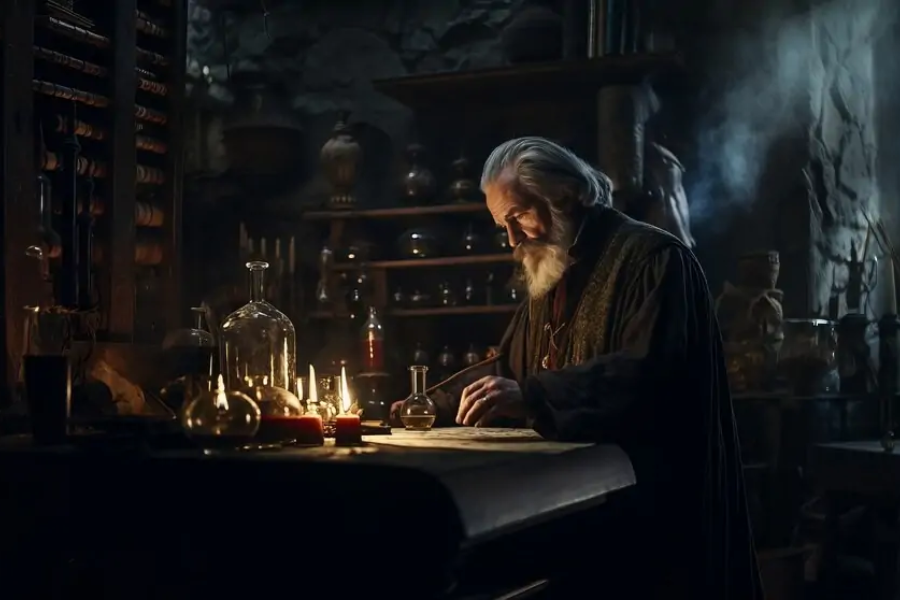Clochant: Embracing Imperfection and Innovation Across Art, Architecture, and Culture
In the intricate tapestry of language, certain words not only captivate our curiosity but also invite us to explore deeper cultural and historical contexts. One such term is “clochant,” a concept that weaves through the realms of art, architecture, and tradition. This article delves into the multifaceted world of clochant, embracing both its imperfections and its innovations to uncover its profound significance.
Origins and Etymology
Derived from the French verb “clocher,” meaning “to limp” or “to hobble,” the term “clochant” is imbued with a sense of irregularity or asymmetry. Linguistically, it describes something that is off-balance or askew, mirroring the imperfections that add depth and character to the human experience. This subtle, yet impactful, connotation sets the stage for a broader exploration of clochant’s role in various domains.
Cultural and Historical Significance
Beyond its literal meaning, clochant holds significant cultural and historical resonance. In architecture, particularly within Gothic and Romanesque styles, it refers to bell towers that intentionally feature imperfections. These deviations were crafted to acknowledge the limitations of human craftsmanship in the face of divine perfection. Such intentional irregularities were seen as a way to avoid appearing arrogant before the divine, embracing the fallibility of human endeavor.
In literature and poetry, clochant can denote rhythmic irregularities or deliberate deviations from conventional meter, infusing verses with a unique cadence that reflects life’s unpredictability. This usage underscores the artistic license to embrace imperfections as a vital part of creative expression, mirroring the way human experiences are often unbalanced and unpredictable.
Philosophical Reflections
Philosophically, clochant invites a contemplation of beauty and perfection. It challenges the notion that flawlessness equates to excellence, proposing instead that true depth and authenticity often arise from the quirks and deviations that define individuality. By embracing what is “clochant,” we embrace the essence of humanity itself—a tapestry woven with threads of diversity and idiosyncrasies. This perspective encourages us to find beauty in the unconventional and to appreciate the unique imperfections that make us human.
Contemporary Applications
In contemporary discourse, clochant resonates with various fields, from design aesthetics to personal development. Designers and artists often seek to incorporate elements of imperfection into their creations to evoke emotions and provoke thought. This approach transcends sterile uniformity, favoring meaningful expression that reflects a more authentic and human-centered perspective.
Challenges and Solutions of Clochant
The concept of clochant, with its embrace of imperfection and asymmetry, presents unique challenges and opportunities across different domains. Let’s explore these challenges and propose potential solutions.
1. Structural Integrity in Architecture
Challenge: Incorporating asymmetry and irregularity in architectural designs can challenge structural integrity and stability. Ensuring that buildings remain safe and functional while embracing clochant aesthetics requires careful planning and engineering.
Solution: Advanced modeling software and structural analysis tools can help architects and engineers simulate and test designs before construction. Utilizing materials with high strength-to-weight ratios can also enhance stability without compromising the desired aesthetic.
2. Perception of Imperfection
Challenge: In a world that often values perfection and uniformity, embracing clochant can face resistance. People may view intentional imperfections as flaws rather than unique features.
Solution: Education and awareness campaigns can help shift public perception. Highlighting historical examples and contemporary successes where clochant has been celebrated can demonstrate its value and beauty.
3. Consistency in Artistic Expression
Challenge: For artists, balancing intentional irregularity with overall coherence can be challenging. Excessive asymmetry can lead to chaos, while insufficient asymmetry may fail to capture the essence of clochant.
Solution: Artists can benefit from studying design principles that focus on harmony and balance. Workshops and collaborative projects offer opportunities to experiment and refine techniques that incorporate clochant effectively.
4. Economic Viability
Challenge: Projects that embrace clochant may encounter higher costs due to specialized materials, custom designs, and additional engineering efforts.
Solution: Seeking funding from grants, art foundations, and cultural organizations can help offset costs. Promoting the unique value and appeal of clochant designs can attract clients and investors willing to support innovative projects.
Sustainable Practices in Clochant Architecture
Integrating sustainable practices into clochant architecture, which embraces imperfection and asymmetry, presents opportunities to create environmentally friendly and aesthetically intriguing designs. Here are some key sustainable practices:
1. Use of Recycled and Local Materials
Practice: Utilizing recycled and local materials reduces the environmental impact associated with transportation and manufacturing.
Example: Reclaimed wood, recycled metal, and locally sourced stone can be used to create unique, irregular patterns that align with the clochant aesthetic.
2. Adaptive Reuse
Practice: Repurposing existing structures conserves resources and reduces waste.
Example: Transforming old industrial buildings into residential or commercial spaces while maintaining their original, imperfect features can result in distinctive and sustainable designs.
3. Energy Efficiency
Practice: Implementing energy-efficient systems and designs minimizes energy consumption.
Example: Incorporating passive solar design, high-performance insulation, and energy-efficient windows helps maintain comfortable indoor temperatures with minimal energy use.
4. Green Roofs and Walls
Practice: Installing green roofs and living walls enhances insulation, reduces the urban heat island effect, and promotes biodiversity.
Example: Green roofs can be designed with irregular patterns, creating visually appealing and environmentally beneficial features.
5. Water Conservation
Practice: Implementing water-saving technologies and systems reduces water usage.
Example: Using rainwater harvesting systems and low-flow fixtures significantly decreases water consumption in clochant buildings.
6. Natural Ventilation
Practice: Designing buildings to maximize natural ventilation reduces the need for mechanical cooling and heating.
Example: Strategic placement of windows and vents can create cross-ventilation, enhancing indoor air quality and comfort.
7. Biophilic Design
Practice: Integrating natural elements into design improves well-being and connection to nature.
Example: Incorporating irregularly shaped indoor gardens, water features, and natural materials enhances clochant’s aesthetic while promoting sustainability.
8. Modular and Prefabricated Construction
Practice: Using modular and prefabricated construction methods reduces waste and improves efficiency.
Example: Prefabricated components can be designed with unique clochant features, allowing for quick assembly and reduced construction waste.
Clochant: A Deep Dive into Tradition and Innovation
Have you ever encountered something so unique that it left you pondering its origins and significance? That’s clochant—a term that bridges tradition and modernity in profound ways. Let’s delve into this concept, exploring its historical background, regional variations, and modern adaptations.
Historical Background of Clochant
Clochant’s roots stretch back to ancient times, evolving through various eras and adapting to cultural contexts. Initially linked to rituals and daily life, clochant has seen significant milestones throughout history. From its early forms in ancient communities to its recognition in global contexts, clochant’s journey reflects societal changes and resilience.
Regional Variations
One of clochant’s most captivating aspects is its regional diversity. Different cultures have embraced and molded clochant to fit their traditions and celebrations. From vibrant festivals in Asia to serene rituals in Europe, clochant has become integral to various cultural tapestries.
Role in Traditional Celebrations
Clochant is more than a concept; it is a symbol. In many cultures, it plays a central role in celebrations, symbolizing prosperity, health, and unity. Its presence in festivals and rituals highlights its importance in maintaining cultural heritage.
Adaptations and Innovations
In the modern world, clochant has thrived through numerous adaptations and innovations. Contemporary interpretations have revitalized it, making it relevant to younger generations while preserving its essence. This dynamic evolution ensures that clochant remains a vital and vibrant part of cultural discourse.
Influence on Popular Culture
Clochant’s influence extends to popular culture, making its mark in movies, music, and more. It acts as a bridge between past and present, demonstrating how traditions can blend seamlessly with modernity. This influence underscores clochant’s enduring appeal and versatility.
Unique Characteristics
What sets clochant apart are its unique characteristics, which make it instantly recognizable and beloved. Understanding these traits enhances our appreciation of the effort and creativity behind clochant, showcasing its distinctive qualities.
Comparison with Similar Concepts
Clochant often draws comparisons with similar concepts. While sharing some similarities, clochant’s distinctiveness lies in its execution and the cultural nuances that shape it. This comparison highlights what makes clochant unique and valuable.
Traditional and Modern Techniques
The making of clochant is both an art and a science. Traditional methods are passed down through generations, reflecting a deep respect for heritage and craftsmanship. Meanwhile, modern techniques have emerged, offering convenience and accessibility without compromising quality. These innovations ensure that clochant’s legacy continues to thrive.
Ingredients and Their Properties
Clochant’s ingredients are key to its unique properties. Each ingredient contributes to its flavor, texture, and overall appeal, creating a harmonious blend. Understanding these ingredients adds another layer to our appreciation of clochant.
Health Benefits
Beyond its sensory appeal, clochant offers health benefits. Its ingredients are often rich in nutrients, making it a delightful yet healthy choice. This aspect further enriches our understanding of clochant’s value.
Popular Recipes and Fusion Cuisine
Clochant’s versatility shines in the culinary world. It is featured in many popular recipes, each showcasing its best attributes. In fusion cuisine, clochant takes on new forms, with chefs experimenting to create innovative dishes that marry tradition with contemporary tastes.
Depictions in Various Art Forms
Art and literature have immortalized clochant, highlighting its cultural importance and artistic inspiration. Whether through paintings, sculptures, or written works, clochant’s presence in art forms is a testament to its enduring impact.
Personal Experiences and Testimonials
Real-life experiences and testimonials offer a unique perspective on clochant. Individuals who have encountered or engaged with clochant share their stories, shedding light on its personal significance and influence.
Future of Clochant
The future of clochant is bright, with ongoing developments and evolving trends. As it continues to adapt and thrive, clochant will remain a cherished part of our cultural landscape. Its future promises to be as dynamic and diverse as its past, ensuring its relevance for generations to come.
Conclusion
Embracing clochant allows us to appreciate the beauty of imperfection and the innovation born from embracing our quirks. By examining its historical roots, cultural significance, and modern adaptations, we uncover the rich tapestry of human creativity and resilience. As we continue to explore and celebrate clochant, we honor both its past and its future, recognizing the profound impact it has on our understanding of art, architecture, and culture.
“Explore comprehensive insights and expert analyses on SNMP technology at SNMPanel.org.”







